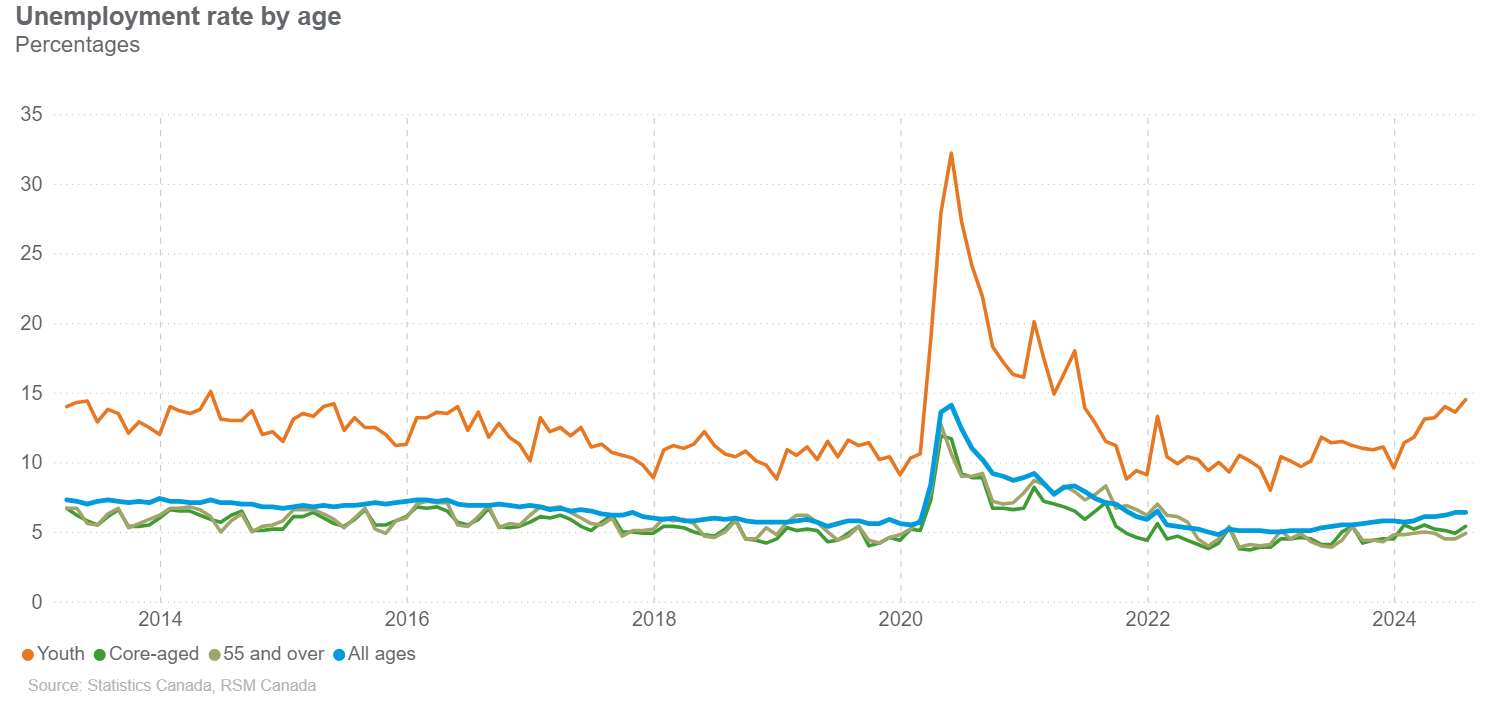Canada’s July jobs report spelled out the need for more rate cuts as the economy shed 2,800 jobs, according to data released Friday by Statistics Canada.
The unemployment rate stayed steady at 6.4% as labour force participation fell in a challenging market. Some youth and women had stopped looking for work in the lackluster job market; labour force participation fell 2.5 percentage points among young men, 1.3 percentage points among young women, and 1 percentage point among core-aged women. Among youth out of the labour force, 12% wanted work but did not try looking, a 2.6 percentage point increase from a year ago.
Continued rate cuts will be essential for hiring to pick up. If inflation data shows no surprises when it comes out, the Bank of Canada needs to cut the policy rate by 25 basis points in September.
Furthermore, we expect a string of 25-basis-point cuts until the Bank of Canada gets to a neutral rate, which we define as a range between 3% and 3.5%.
A closer look at employment
The job market is in a frozen state: workers with jobs are keeping them, while new entrants struggle to find jobs. The trend this year has been volatile labour demand and steadily increasing labour supply, and as a result the unemployment rate is expected to climb further in 2024. That would cause wage growth—which remains elevated at 5.2%—to ease.
Employers who might have over-hired a couple years ago are holding tight and waiting for further rate cuts, and this lack of hiring hurts youth and new immigrants—as well as those currently unemployed—the most. The employment rate of returning students fell to 51.3%, the lowest since 1997. This highlights the difficult summer job market for students as companies are exceptionally reluctant to hire.
Full-time employment in July grew by 62,000 while part-time employment fell 64,000. But over the past year, part-time employment has grown at a faster pace than full-time employment by 224,000, reflecting the weakening of the labour market overall. More workers are under-employed and working fewer hours now compared to a year ago.
The public sector continues to be the main job driver as it added 41,000 jobs while the private sector lost 43,000 jobs in July. Over the past year, the public sector has played a big role in keeping Canada out of a recession, adding 205,000 jobs across health care and social assistance (87,000), public administration (57,000) and education (33,000).
Employment fell in wholesale and retail trade (44,000) and finance, insurance, and real estate (15,000).
The takeaway
In an economy where virtually no hiring is happening and young workers and new immigrants cannot find jobs, the one tool to enable recovery is rate cuts. Even with a series of rate cuts expected, the unemployment rate will rise in the short term before improving.

